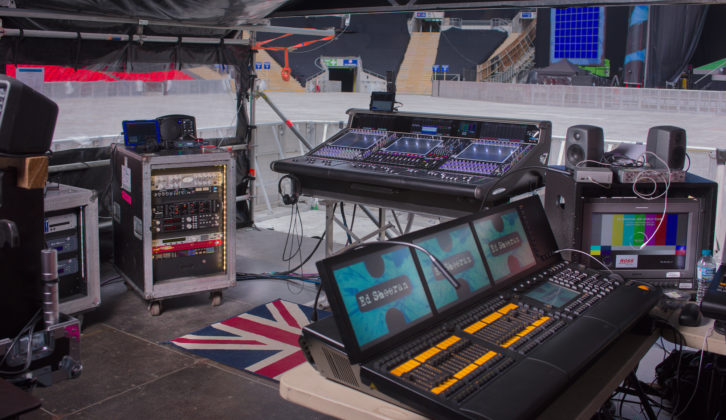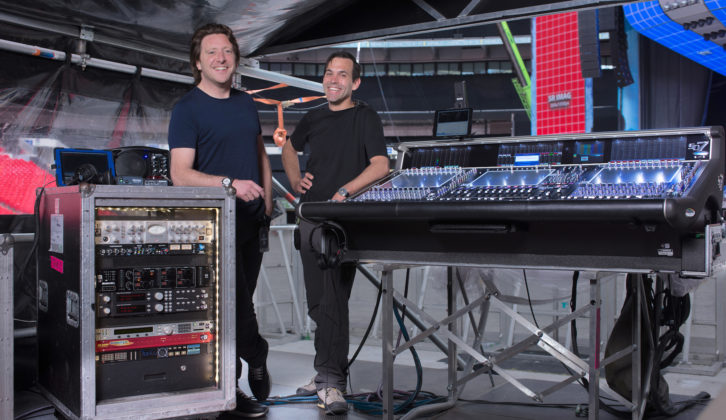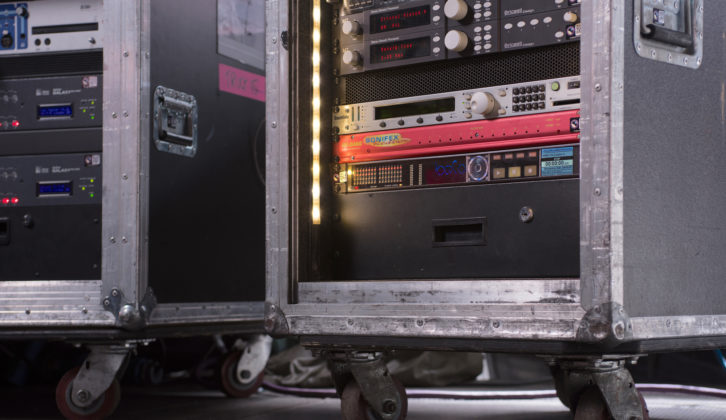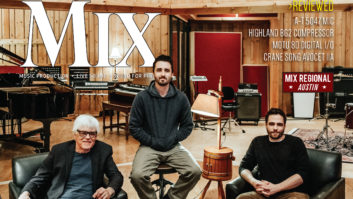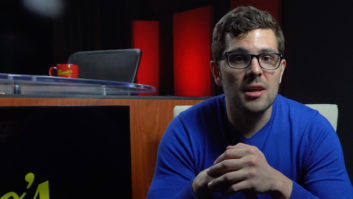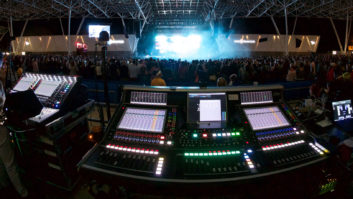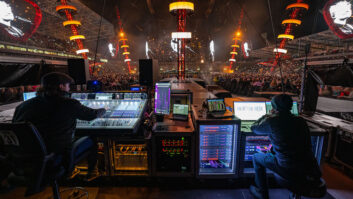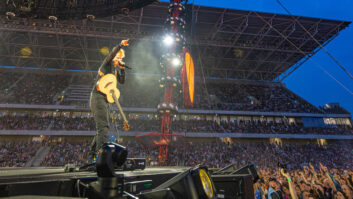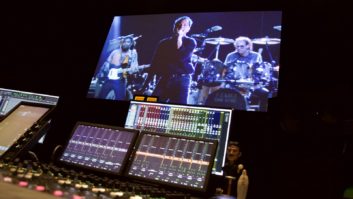London, UK (July 18, 2018)—Ed Sheeran has been playing for massive crowds on his Divide tour, and a run of shows at Wembley Stadium for 80,000 people each night was no exception. Speaking inside the venue, Front of House engineer Chris Marsh and audio systems engineer, Charlie Albin employed a JoeCo Blackbox BBR64-MADI multi-track recorder not only to preserve the concerts for future reference and use, but also for day-of-show preparations.
The FOH position at Ed Sheeran’s recent Wembley Stadium shows.
Charlie Albi with the FOH rack, which includes a JoeCo Blackbox BBR64-MADI unit at its base.
Front of House Engineer, Chris Mars (Left), and Audio Systems Engineer, Charlie Albin.
Front of House Engineer, Chris Mars (Left), and Audio Systems Engineer, Charlie Albin, at the FOH position during Ed Sheeran's recent run of shows at Wembley Stadium.
The BBR64-MADI records up to 64 tracks at 48 kHz, but throughout the Divide tour, they’ve used it to capture every Sheeran performance, usually comprising 16 channels of vocal, acoustic guitar and loops. Perhaps its most prominent application, however, has been Albin’s use of the unit for virtual soundchecks.
“We record every single show and check it the next day,” said Albin. “Basically, because of the busy schedule, Ed is rarely available to soundcheck on stage…so our only way of checking what the venue is going to sound like is to use his previous night’s performance.”
The BBR64-MADI takes a feed of Sheeran’s vocals and guitar directly from the DiGiCo SD7 console at FOH, as dry input channels. For the virtual soundcheck, these come back into the same channels that can then be EQ-adjusted for the venue. “We also take a left-right board mix as a reference,” said Albin, “and maintain some sub-groups for various purposes – usually a broadcast pre-mix, because this is not like a regular band. A lot of engineers would struggle to piece together certain details in a short space of time.”
Nonetheless, recording shows is an option used nightly, as much for potential future use as for soundchecking at a later date. Albin explained, “If there’s a special guest, we may want the appearance documented or put out online in some way. Chris can actually do that on-site; we often carry a pair of studio monitors with us so we can put the recorded tracks back through the board and do a bespoke mix. Sometimes a third-party engineer will need a mix for a specific awards ceremony, for example, and will bring his own recording setup: in that instance, we’ll use our Blackbox as a backup.”
While show recordings can help an artist dissect a performance after the fact, or aid the audio team in prepping for the next show, those two uses merged somewhat recently when the Blackbox aided in uncovering a glitch in Sheeran’s custom loop setup.
Albin explained, “Ed’s loop pedal is a completely bespoke product, with software programmed by a coding expert, and a couple of weird bugs have cropped up. We’ll notice during a performance that the same artefact comes up at a certain point, and the only way to prove our suspicions is to turn to the recordings: we use them to verify the issue and confirm that we’re not going mad. We can’t get Ed up there to try and recreate it; it’s the kind of thing that only happens in a show, and the recordings give us a snapshot of that. It’s impossible to replicate, so the recordings are hugely valuable.”
JoeCo • www.joeco.co.uk
